by Al Seizovic
73 shares
Last Updated on July 15, 2022
Pulling up to the stoplight with your 2002 Hyundai Tibouran at midnight, you get the bright idea: “I’m going to do a burnout, there’s nobody around”.
You throw the automatic transmission in “1”, hold the brake and the accelerator, then release the brake expecting to spin your tires like all the Fast and Furious movies!
Nothing happens? Well that’s probably because you didn’t read this AWESOME how-to guide on burnouts with an automatic transmission.
See Also: Measuring Horsepower (HP vs BHP vs WHP)
Table of Contents
They ENHANCE your life! There are few things more satisfying in the automotive landscape than an awesome burnout. The tires are spinning, you’re vaporizing tires, breathing in smoke, making a bunch of noise, and generally pissing off all of the grumpy people around you. It’s great!
Burnouts come in all shapes and sizes. You’ve got the big muscle car angry burnouts that you might see accompanied with a Dodge Charger, Ford Mustang, and maybe even an E63 AMG Mercedes!
On the other side of the spectrum, you have the squealy, nasty rubber burning sessions of the Honda Civic variety. You’ll be able to spot this species in the wild by a loud, raspy popping noise paired with a front wheel drive (FWD) hatchback looking as if it’s floating on clouds instead of front tires.
This is because those front tires are moving so fast as to create friction and heat, allowing the driver to burn rubber through the intersection. This can also be found with Subaru Impreza WRXs when they do their all wheel drive (AWD) launches from intersection to stoplight.
You may also spot a motorbike doing a burnout at a stoplight, which is another being altogether. They’ll get all of the weight on their front tire, then rev the throttle all the way to the rev limiter making a WAHWAHWAHWAHWAHBRINNNGGGG sound as their tires reach terminal velocity.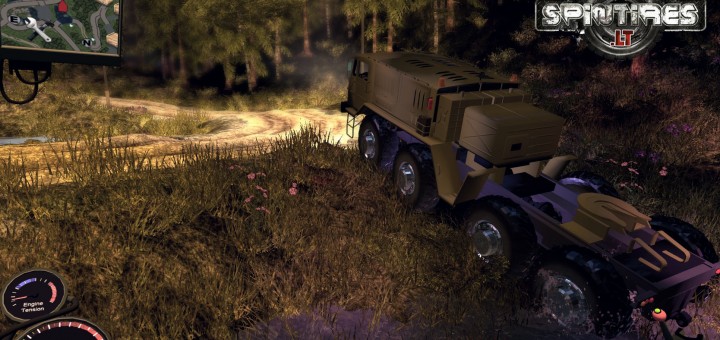
This behavior has been studied by biologists for at least a hundred years, yet the motives around displays such as this still perplexes us. Is it to throw up a middle finger to the law? Are they trying to warm up their new tires to grip more during an impending drag race? Or, do they simply just want to do it, so they do it?
Read Also: Differences Between AWD and 4WD
Although I don’t have a source on this claim, I feel it’s safe to say most of the burnouts you’ve seen have been in a manual transmission, rear wheel drive (RWD) car as it’s much easier. Just throw the transmission into first gear, push in the clutch, mash on the accelerator to build up the revs, then release the clutch quickly and you’ll be peeling out in no time.
Of course, this will happen providing you have enough power to break those tires loose. If not, you’ll roast your clutch, explode your drive shaft, blow up your diff, or destroy your transmission. That energy has to go somewhere, and if your tires are too sticky, you’ll break something.
That energy has to go somewhere, and if your tires are too sticky, you’ll break something.
Related: How to Identify Your Car’s Transmission
If you want to do a burnout, you are pretty much playing with fire here. Unless you have express permission by a landowner or it’s on your own property, you could get fined upwards of $1000 for damaging property.
This is because most parking lots have lines painted on them, and spinning your tires and otherwise acting recklessly is going to wear out those lines. Then, the property owner is going to have to pay to repaint those lines which will cost them money.
This is a first hand account, so just remember, the cameras on many of these private buildings surrounding parking lots are a lot better than you think. Hint hint: they can read your license plate!
If you’re thinking about doing a burnout on a public road, there are some more considerations you should take. First, make sure there aren’t any people around, in the way, or in the oncoming traffic lane. You don’t want to end up like a Ford Mustang driver leaving every “cars and coffee” meetup (example below).
You don’t want to end up like a Ford Mustang driver leaving every “cars and coffee” meetup (example below).
Also, keep in mind, this all needs to be considered before you do anything at all burnout or drift wise, as I’m already assuming you’re ok with breaking whatever law is preventing this in your area. From experience, we’re all going to do things that aren’t legal in our cars, and that just comes with the territory of owning an enthusiast car.
Also, there’s nothing in this article that will protect you from the law, you just need to be smart about this and never hurt another motorist or pedestrian.
See Also: What Can Happen When You Engage the Parking Brake While Driving
As stated above, don’t hurt anything other than your tires. Additionally, you’ll need to make sure you are in control of your vehicle because that’s your responsibility as a motorist.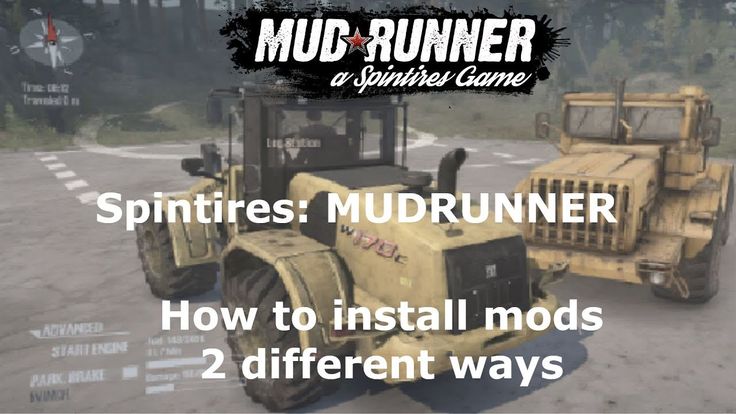
Being able to do a sick burnout in Need for Speed doesn’t mean you can do the same thing on real life. Even better, sign up for a performance driving course to get real instruction and experience in a safe environment.
It’s also good to know that you’ll be wearing out parts quicker when you do burnouts in your car, so pay attention to the color of your transmission fluid, the smell of your clutch, and just check your car more often. As you add heat, power, and force, something is going to break.

If you aren’t getting the results you want, try some older rubber.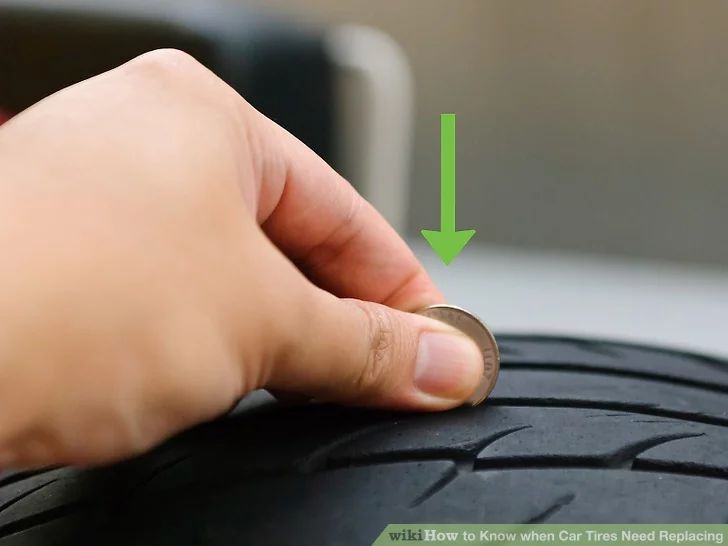 Your local tire shop should have some old tires that aren’t being used, maybe they’d even give them to you!
Your local tire shop should have some old tires that aren’t being used, maybe they’d even give them to you!
Another idea is to spray water on the ground around the tire that you are trying to spin so you can decrease the traction, thus increasing the ease at which you can burn rubber. Oil and whatever other lubricant you want works too.
Also, I want to mention that if you can’t disable the traction control on your vehicle, you probably won’t be able to get very far on this quest because your vehicle will be fighting you every step of the way.
Categories General Tags automatic transmissionAsk a question, get an answer ASAP!
advertisements
Now this is going to be an interesting driving skill to learn – how to make an automatic car tires spin. Once you have mastered the skill to spin car tires, you can do a burnout in any cars with automatic transmission. Generally, spinning car tires is all about sending some serious horsepower to the wheels of your car. If you have extra pocket money to burn tires, check out the step by step guide to spin an automatic car tires and perform a burnout.
If you have extra pocket money to burn tires, check out the step by step guide to spin an automatic car tires and perform a burnout.
First of all, find a wide opening safe place before you begin the practice. Make sure you have plenty of room on either side just in case you are spinning out of the course. Make sure there are no lampposts, drains or big trees around.
Step 1: Switch off the traction control and shift the gear to D and drive the car in straight about 20-30 mph (30-50 km/h).
Step 2: Remove your foot from the gas pedal sharply and turn the steering wheel to your desired direction.
Step 3: Pull the e-brake (handbrake) for a second at the corner entrance and you will start feel the rear tires are spinning. In other words, you car will start go sideways.
Step 4: Release the steering wheel and go into counter steer mode. Gently start stepping on the gas if you feel the car is losing power. You can then do a drift.
You can then do a drift.
Always remember to release the gas and step on the brake in case anything out of your control. See how to parallel park a car if it is a coup de grace for you. So, can you make an automatic car tires spin now? The answer is definitely yes.
How to Do a Burnout
Step 1: The entire point about burnout is to make the tires spin or slip. Thus, turn off the traction control of your vehicle.
Step 2: Put the car to first gear by shifting the gear selector to “D1”, “1”, “L” or “D”. See learning to drive an automatic car for more details.
Step 3: Engage the e-brake by holding the safety button with your thumb.
Step 4: Press the gas until the RPM is high enough to get the wheels spinning and slightly release the e-brake. Your car tire will start spinning and your car will crawl forward a little.
So, can you do a burnout with automatic car? Yes! See how to do a burnout for step by step guide to do a burnout with manual and automatic transmission cars regardless of FWD or RWD.
This step-by-step tutorial will give you a clue on how to drift an automatic car. It basically allows you to perform a donut drifting.
Step 1: The entire point about drifting is to make rear part of the car slip or go sideway. Therefore, turn off the traction control.
Step 2: Shift the transmission to first gear. It is usually D, D1, 1 or L. See learning to drive a car for more details.
Step 3: Turn the steering wheel all the way to one direction and step the gas hard to transfer most of the horsepower to the rear wheel. The rear tires will begin to lose traction and your car will start spinning donut. That’s known as donut drifting.
What if you failed to spin your car tires?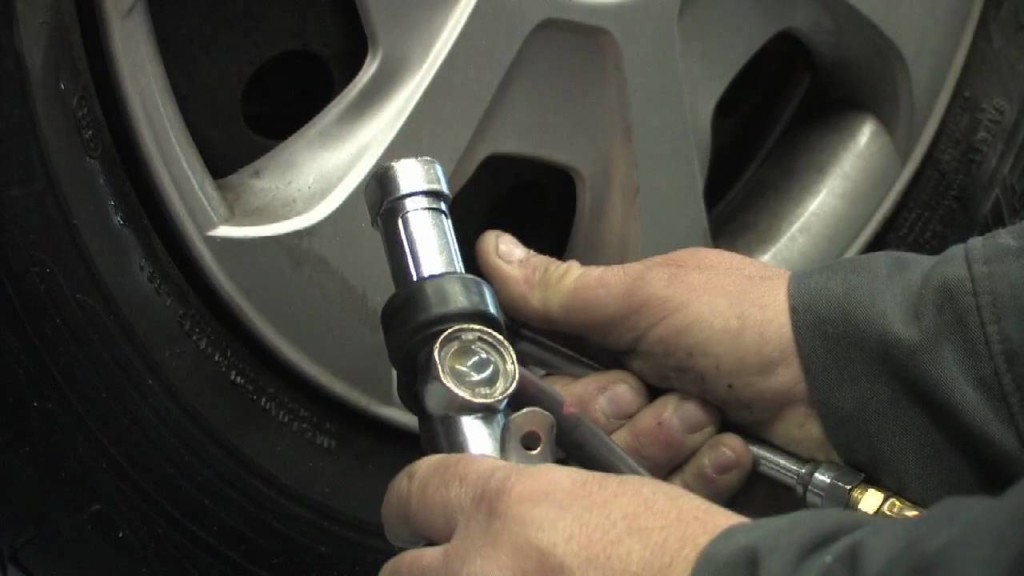 Normally, if your left foot step on the brake too hard will cause the clutch burns. See learning to drive a manual car for better understanding.
Normally, if your left foot step on the brake too hard will cause the clutch burns. See learning to drive a manual car for better understanding.Whether you are trying to make an automatic car tires spin or do a burnout, make sure you don’t do it for too long. 5 to 20 seconds is always an ideal timing depending on your car condition. Please remember that your car will be sitting still while you are running the engine very hard to perform a burnout. There won’t be any extra wind to cool down the engine like a normal driving because you are not traveling in high speed. When you are spinning your car tires or do a burnout, all the heat will be sitting under the hood therefore it is not recommended to keep doing it.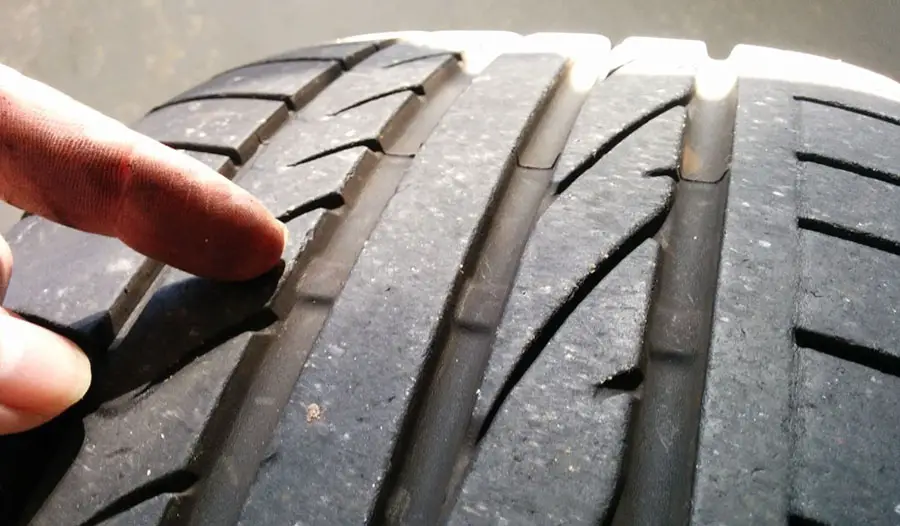 Watch the temperature gauge closely and take a rest in between your burnout practice. Open YouTube and you can see there are many videos showing people try to do a burnout for too long and then the engine explode. Nobody wants that happen and make sure you make your car tires spin in a cool way. Last but not least, check out the tips, driving techniques and safety while driving in the rain.
Watch the temperature gauge closely and take a rest in between your burnout practice. Open YouTube and you can see there are many videos showing people try to do a burnout for too long and then the engine explode. Nobody wants that happen and make sure you make your car tires spin in a cool way. Last but not least, check out the tips, driving techniques and safety while driving in the rain.
advertisements
Burnout - slip, in professional slang, means warming up the rubber on a car standing still, that is, slipping of the tires themselves and rubbing them on the asphalt . As a result of the contact of tires with a hard asphalt surface, they begin to warm up quickly and smoke appears from under them.
Burnout, the so-called slip, is used before races on the drag racing track for better tire grip, as well as for better and more stable handling of a very powerful car on a rally track.
From the category of a necessary action, burnout quickly moved into the category of a kind of entertainment, thus becoming an element of a certain show where its participants show a higher level of car control using all its capabilities.
For a burnout, i.e. for slipping, the following conditions are necessary:
2. The car must be technically sound. During the application of this technique in practice, the loads on the engine, on the brake system, on the wheel bearings and on the suspension reach the most extreme values.
3. The car owner must be personally aware of the following fact: that such heating of the rubber can lead, and sometimes does lead to serious technical breakdowns.
Attention!!! The article is written for one purpose only, namely to show the basics of the burnout technique. It does not in any way call motorists to action. Any attempt to use this racing vehicle for any recreational or professional purposes may result in serious damage to the vehicle. Also, this type of activity can be dangerous both for the driver himself and for those around him. In no case should this slipping method be used in crowded places, as well as on public roads !!! This is a mandatory requirement for all motorists.
Any attempt to use this racing vehicle for any recreational or professional purposes may result in serious damage to the vehicle. Also, this type of activity can be dangerous both for the driver himself and for those around him. In no case should this slipping method be used in crowded places, as well as on public roads !!! This is a mandatory requirement for all motorists.
I. Make sure your vehicle is suitable for burnout. It must have enough horsepower. For this, such machines are usually suitable, in which the number of cylinders in fact is more than four, which are equipped with a manual transmission. And for a greater effect, smooth tires are also needed, which have a large area of \u200b\u200bthe so-called contact patch with the asphalt surface, which can give out a lot of effective smoke.
*If your vehicle is equipped with an automatic transmission, the use of burnout slip is strictly prohibited. It will lead to the destruction of the transmission and costly repairs to the car itself.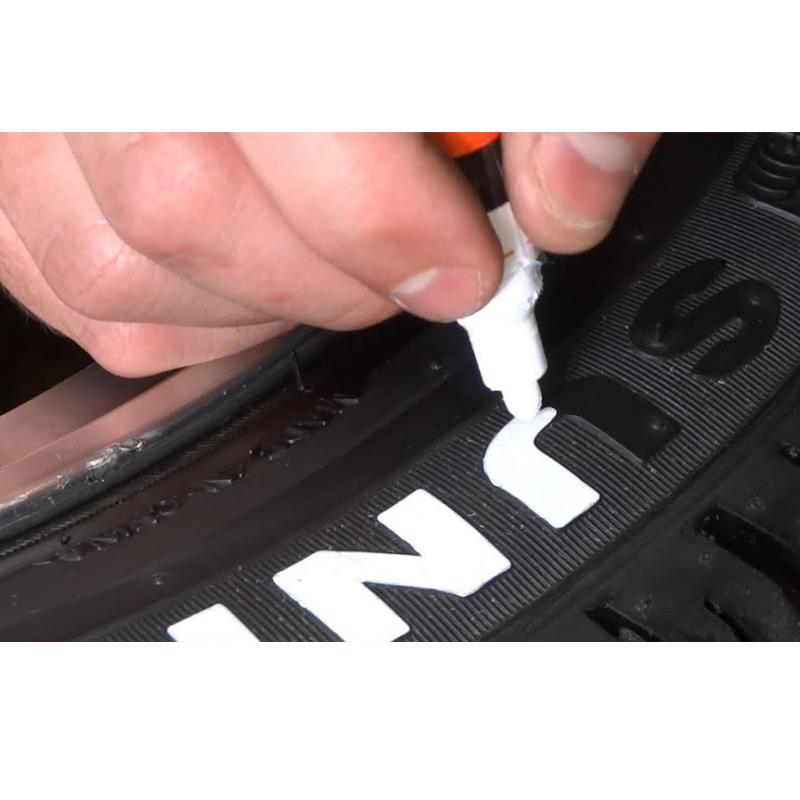
II. Engage first gear, then fully depress the clutch and gradually begin to increase engine speed. In a quick but smooth motion, start releasing the clutch pedal while still pressing on the gas.
Attention!!! To prevent the speed from going into the red zone, work with the gas pedal very carefully, you do not need to press it all the way to the floor. The ideal technique is shown in the following video (1.00 minute video). Play with the gas pedal, alternately pressing it harder, then weaker, while constantly keeping high, but also safe for the engine speed !!!
The average range of these revolutions should be between 3500 - 4500 thousand rpm. On modern vehicles, this range is closest to peak torque.
With the clutch fully released, place your left foot on the brake pedal. In order to press with the right force with your left foot on the brake pedal, some practice is required. From the first time (and sometimes from the tenth) it is very difficult to do this.
From the first time (and sometimes from the tenth) it is very difficult to do this.
Braking force must be more than sufficient, and this is necessary so that the rear wheels of the car continue to turn freely, while the car itself remains in place or continues to move very slowly forward.
Attention !!! Trying to do a burnout for the first time will, of course, be initially unsuccessful over and over again, and this will continue until you learn to feel the smallest nuances of the car's behavior. In this case, there is a possibility of overheating of the clutch itself, up to its failure. So try to keep an eye on unusual and foreign smells that appear in the car interior, as well as on the behavior of the car itself, when you turn on the gearbox and squeeze the clutch, exactly at the moment the clutch discs converge!!!
III. Burnout is somewhat easier on front wheel drive than on rear wheel drive. To do this, you need to hold the parking brake, then raise the engine speed and just as smoothly and quickly release the clutch pedal. As a result of such a fast (almost instantaneous) increase in the speed of rotation of the front wheels, the car will not go forward and will not stall; remaining in one place, he will begin to release long-awaited and long-awaited puffs of smoke from under his tires.
To do this, you need to hold the parking brake, then raise the engine speed and just as smoothly and quickly release the clutch pedal. As a result of such a fast (almost instantaneous) increase in the speed of rotation of the front wheels, the car will not go forward and will not stall; remaining in one place, he will begin to release long-awaited and long-awaited puffs of smoke from under his tires.
Front wheel drive is much easier to burnout. But at the same time, there is one important nuance, namely: the handbrake of the car must be in good working order, it must be able to hold the car in one place.
IV. If the car does not have enough power for such experiments, then in this case, the connoisseurs have some tricks in store that help one hundred percent to break the wheels of the car into slipping.
1. Lighten your car, especially for rear wheel drive vehicles.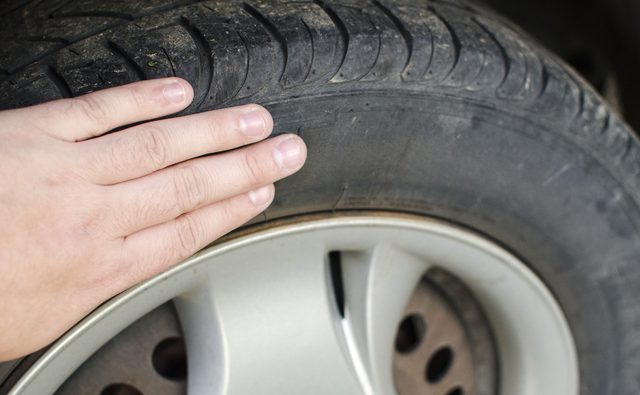 There should not be anything superfluous in the trunk, not even a spare wheel. Before you drive to the site, you need to take care of this in advance. The axle of the car will unload a little and it will be easier for her to break the wheels into slip.
There should not be anything superfluous in the trunk, not even a spare wheel. Before you drive to the site, you need to take care of this in advance. The axle of the car will unload a little and it will be easier for her to break the wheels into slip.
2. Burnout Rolling back at low speed with the clutch depressed, you do almost everything the same as in previous times. Release the clutch, then press the gas, but no longer press the brake. As a result of the action of multidirectional forces, one of the forces will be directed downward, and the engine force will be directed in the opposite direction, that is, it will pull up and the car in this case will remain in place without the brakes being pressed.
3. Try this first on a wet surface. Grip on asphalt will be much weaker than it could be in dry weather, and this will definitely increase your chances of success.
V. And in conclusion. To reduce stress on the brake system itself, use the Brake line locking system, i.e. blocking. After installing it on the car and pressing the button, it will automatically turn off the rear brakes. This will simplify your task and keep the car in its original technical condition.
To reduce stress on the brake system itself, use the Brake line locking system, i.e. blocking. After installing it on the car and pressing the button, it will automatically turn off the rear brakes. This will simplify your task and keep the car in its original technical condition.
And a snack for all readers: Fail and Win compilations of burnout.
Donuts and burnt rubber
To perform the maneuvers that I will discuss below, you need a car where you can turn off the traction control and stability systems - and this is a rare endangered species these days. It should also be rear-wheel drive, with a limited-resistance differential.
The differential adjusts the speed of rotation of the drive wheels relative to each other. In a turn, it allows the outer wheel, which follows a longer path, to rotate faster than the inner one. As you accelerate, the limited-slip differential performs a second task: distributing torque to the wheels.
When the car enters a corner, the outer wheels are loaded, resulting in more traction than the inner ones. Unloaded wheels on the inside tend to lose traction when accelerating. In vehicles with an open (i.e. standard) differential, torque is uncontrollable. When the inner wheel begins to slip, torque is not transferred to the wheel on the outer path. If there is a slippery surface under it at this moment, it will also begin to slip, and this way you will not go far.
The self-locking differential is activated in the event of a large difference in speed between the drive wheels and distributes the transmission of torque between them, that is, transfers most of the energy to the wheel that currently has better grip. There's only one way to be sure...
Spinning the Nickels
Performing a simple donut is as easy as walking out the door to the street if you have room to maneuver and you're not afraid to ruin your tires. It is easier to carry out this maneuver on a manual gearbox, but it is also possible on an automatic transmission if the engine power is enough to break the grip of the wheels with the road. You can make sure that there is enough power by strongly pressing the gas pedal when starting.
You can make sure that there is enough power by strongly pressing the gas pedal when starting.
Standing still in first gear with the clutch fully depressed, press the gas all the way and spin the engine speed up to the maximum mark. Let the engine roar - never mind, the rev limiter will protect your pistons.
Turn the steering wheel sharply in the desired direction and release the clutch.
To quit means to lift your foot off the pedal faster than if you stepped on molten lava. A common mistake in this case is to start off slowly, carefully releasing the clutch: the clutch disc will overheat, friction will decrease, and you will go forward instead of going sideways.
Accuracy required to rotate vehicle around a specific mark
When you release the clutch pedal, engine power is instantly transferred to the rear wheels. The grip of the tires with the road is immediately broken, and they begin to slip, which is good. Turning the steering wheel causes the car to start rotating, while the center of rotation is in the area of the front wheels.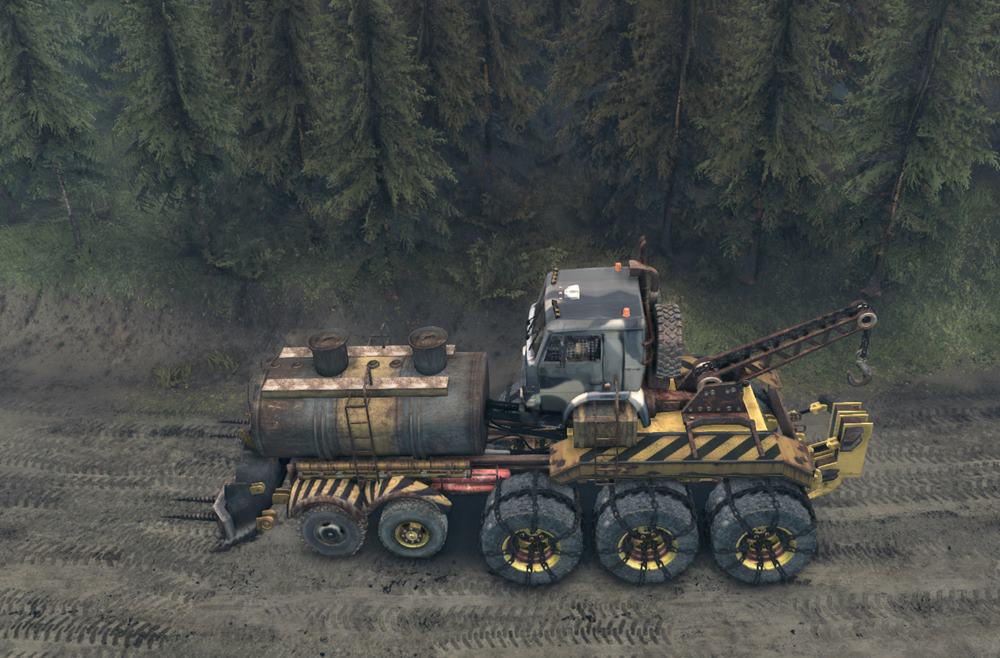 As long as you hold the gas pedal, the car will "cut nickels" in a cloud of burning tire smoke, and it will cost you about 5 pounds per second.
As long as you hold the gas pedal, the car will "cut nickels" in a cloud of burning tire smoke, and it will cost you about 5 pounds per second.
But this is only the beginning.
Pyatak advanced
This trick is much harder to pull off. It will take a lot of time even to explain the technique of performance, let alone to master it. To turn nickels, it is enough to press on the gas and keep the steering wheel turned to the right or left so that the radius of rotation is as small as possible. In an advanced version, you need accuracy that allows you to turn the car around a specific mark. This means that you will have to keep the car on a certain trajectory. It will require coordinated work of hands and eyes.
As for the point around which the rotation takes place, in Top Gear I used a point about 175 centimeters high, with brown hair, which also knew how to do vertical splits. Yes, Chloe Bruce was pretty hard not to notice.
Behind the scenes, I mentally visualized the arc along which the car should move, and I was terribly worried in the last seconds before the curtain fell and 5000 pairs of eyes stared at me.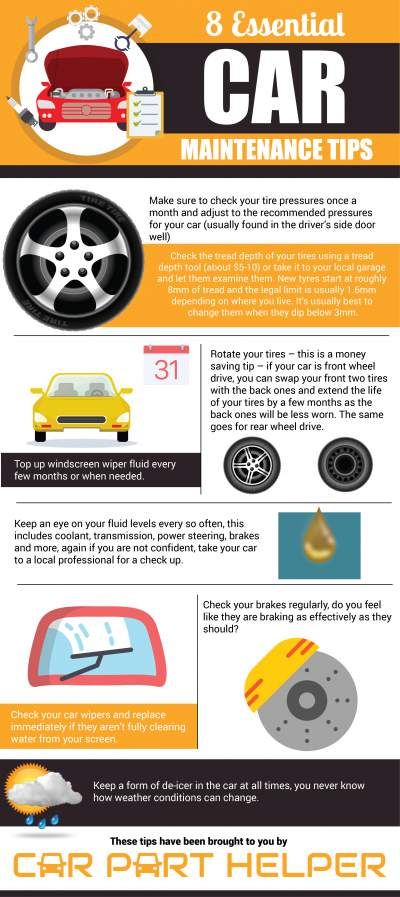
The Holden Monaro, with its noisy eight-cylinder engine and limited-slip rear axle differential, was perfect for the task, and I pre-taped a coin around the handbrake button so it would go down as soon as I lifted it.
I must have performed this maneuver hundreds of times, rehearsed thousands of times, but I still had a bad feeling all the time. My heart was pounding in my chest, and my fingertips tingled with excess adrenaline, because the maneuver was indeed dangerous. I definitely recommend that you practice it using a rubber cone rather than a live person.
The curtain flew up and spotlights pierced the Monaro. I pressed the clutch, and the tires screeched on the metal floor. I gave a little gas to control the rotation of the wheels and give them some power, then shifted into second gear and walked along the concrete retaining wall.
In my peripheral vision, I saw the white kimono that Chloe was wearing, and aimed at a mark about one car width to her left, then applied the handbrake, turned the steering wheel to the right, and the Monaro began to slide.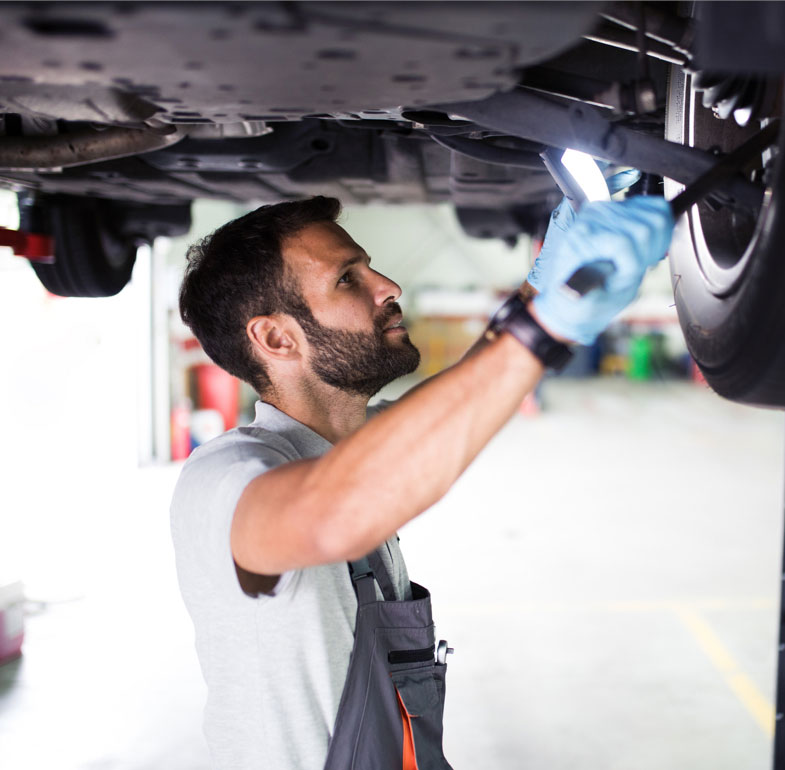
The car turned 45 degrees on the handbrake and went in an arc around Chloe. I entered the maneuver at 60 km/h, and now it has dropped to about 25 in a clockwise rotation.
Chloe continued to dazzle the crowd with her swordsmanship and beautiful lunges as Monaro's mouth got perilously close to her impeccably raised leg. If the wheels had received traction at that moment, the car would have rushed forward and knocked her over like a bowling pin. There is something to be nervous about.
At that moment, I needed to catch the car with the steering wheel and add gas so that there was enough wheel slip to continue sliding. But not too much. This was the difficulty. Knowing the proportions accurately takes practice.
First I had to find a suitable combination of steering reverse and throttle force, and then finally managed to stabilize the car. It was balanced and I could keep it sliding with small corrective movements of the steering wheel and a slight increase in pressure on the gas pedal to keep the rear wheels spinning.
To get even closer to Chloe and scare the crowd, I had to make the car slide on a smaller radius, which is almost the same as making a sharp turn with a shopping cart in a supermarket. The rear part needs to be turned, and the nose of the cart moves in the opposite direction.
I stepped on the gas to make the rear wheels turn even faster, thereby reducing their grip. At first, the car almost went into a U-turn, so I immediately turned the steering wheel in the opposite direction and caught it. After a while, I again managed to stabilize the car, and steering movements were reduced to a minimum.
As a result, the circle that I described around Chloe narrowed, and the crowd stared unblinkingly into the tiny gap between the bumper of the car and her kneecap. A little more gas at this moment - and the car would inevitably turn around; slightly less than necessary, and the wheels would gain traction, and the car would immediately rush forward. Ouch.
You should not count on the fact that the grip of the wheels with the road will be uniform on the site where they arrange performances on cars and the rear wheels can get, for example, into a puddle of antifreeze from a leaking radiator.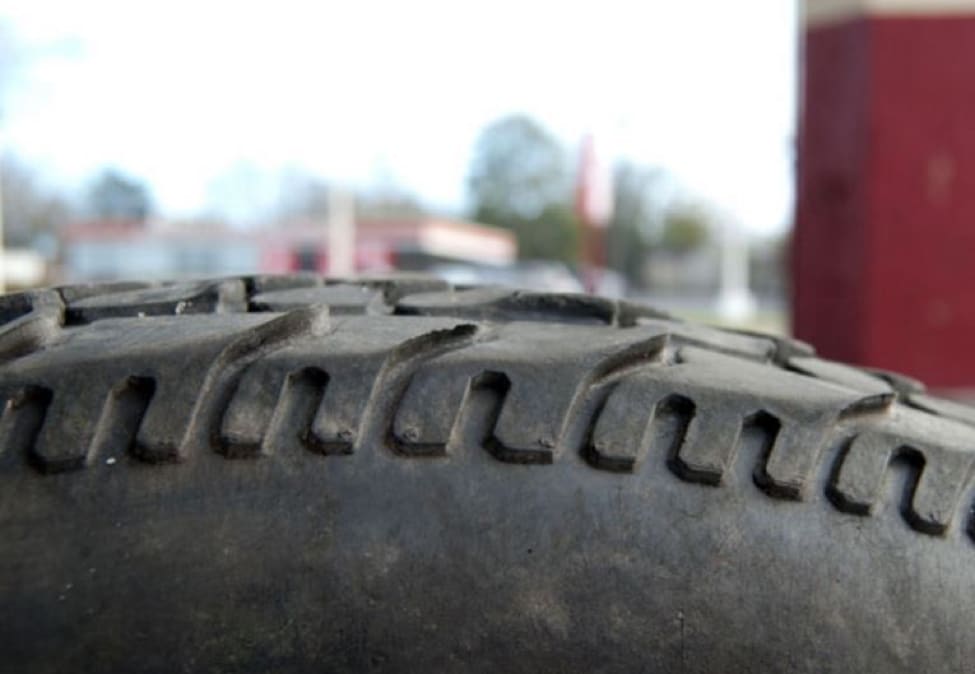 I could handle it, but I needed to have a retreat plan in case my talent ran out.
I could handle it, but I needed to have a retreat plan in case my talent ran out.
To prevent Monaro from taking a bite out of Chloe, I moved the car a little wider. By turning the steering wheel to the left more than necessary to control the slip, and releasing the gas a little, I achieved partial adhesion of the rear wheels to the road. The slip angle decreased, and the car began to obey the steering wheel. Shifting to the left, I stepped on the gas again so that the rear wheels started to spin, and continued with the trick.
Step 1 Pass . Approaching the selected mark, stand sideways and make eye contact with it. Think about how to start the maneuver from the chosen position. The distance to the mark and the slip angle determine your next steps.
Step 2. Throw . As soon as you turn the steering wheel to the right, the rear of the car will go into rotation. Wait until the car turns around at an angle of 45 ° (with a slight correction in one direction or another, depending on the design of the car and other conditions). When you are sure that the rear part of the body has taken the desired position, reverse the movement of the steering wheel and “catch” it, and then slightly reduce the force on the gas pedal. It is necessary to catch such a position of the pedal so that the rear wheels continue to slip.
When you are sure that the rear part of the body has taken the desired position, reverse the movement of the steering wheel and “catch” it, and then slightly reduce the force on the gas pedal. It is necessary to catch such a position of the pedal so that the rear wheels continue to slip.
Step 3. Time to catch . When the car turns 45 degrees, you need to "catch" it, that is, stabilize the rotation, and achieve uniform movement. This is done by corrective movements of the steering wheel left and right. The goal is to balance the car and continue sliding. The difficulty is that the rear of the body is constantly in a skid. In order for the rotation to be stable, it is necessary to accurately act on the steering wheel, otherwise you will either start to “twist nickels” in place or correct the skid completely. You need to slightly release the gas at the moment when the angle reaches 45 °, so that the rear wheels engage the road for a moment, and at this moment you must have time to reverse the movement of the steering wheel. Then you need to press the gas again so that the wheels continue to slip. Continue to look at the selected mark all the time to maintain a constant angle relative to it.
Then you need to press the gas again so that the wheels continue to slip. Continue to look at the selected mark all the time to maintain a constant angle relative to it.
Step 4 Setting . When you find a sweet spot, keep the line on track with small adjustments in throttle force and gentle steering movements. Your goal is to maintain a constant angle relative to the selected elevation. Your movements should ideally be kept to a minimum - let the machine do all the work.
Arc
When you describe a circle with a larger radius, the speed is higher, but keeping the car on the path is a little easier, since the path itself is longer. High speed increases lateral inertia, and it is easier to keep the rear wheels in a skid state. If, when moving along a circle of a large radius, the speed drops, the wheels will grip the road. If you notice a drop in speed, you need to correct it with the gas pedal, or narrow the radius. When moving along a circle with a small radius, the machine responds faster, but the requirements for movement accuracy increase.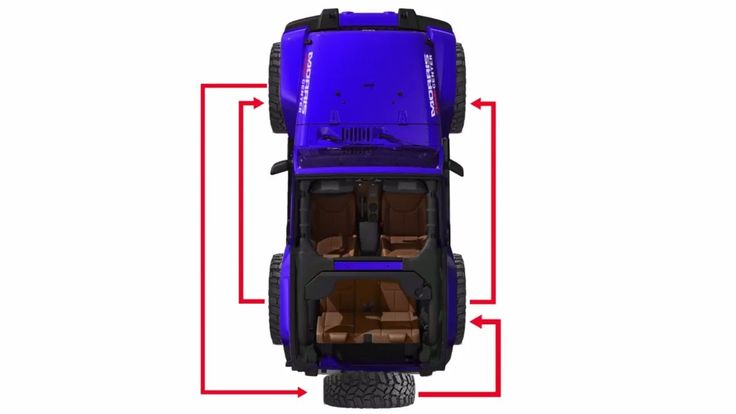
Handlebar
It is not possible to turn the wheels more than the design allows - eventually the handlebar will hit the travel limiter, and this is a problem where every extra centimeter can help correct the trick. Drifting pros are redesigning the steering to make it easier to "turn the car sideways", but in the case of an unprepared standard car, you will have to use what is.
Brakes
In the drifting universe, brakes are used both for actual braking and for limiting movement when the rear wheels are slipping. Professionals of this sport actively use the technique of braking with the left foot. The right foot controls the gas pedal, while speed adjustments during the drift process are constantly needed. There is nothing left but to use the left foot to work with the brake pedal. Braking allows you to transfer weight to the front axle, which, in turn, makes it possible to slip in place and literally burn the rear tires, increase the angle of the skid and all that.